
Matyáš Fialka (1st year) – Space between the trees – bronze JFK
atelier: Dott. Ing.arch. Petr Janoš / MgA. Ing.arch. Petr Šmídek
PET bottle – Task 1
The work began with a thorough analysis of the bottled water and lemonade market, which led to a solution based on the life of a plastic bottle. The proposed solution is almost naively simple. Selling filled bottles alongside an empty one. The design features two variants, empty and with extract. Toughened PET was evaluated as the most suitable material with the weight of returnable bottles, thus a great opportunity for Petainer for a new product utilizing the company’s specific technological equipment in the Czech market. The actual design of the bottle will be created only after clearly defining the target groups and commissioned in the form of a combined public competition. The distributor of the solution should be a water management company, so the bottle functions not only as a saleable product but also as a marketing tool in support of tap water (see carafes from Veolia).
Space under the bridge – Task 2
I enter the assignment through semiotics. I explore its possibilities for creating space. I perceive the symbol as a key element of the design. I choose the object after mapping the meaning and symbols of the words (bridge, path, depth/hill, reluctance). The function is harmoniously determined by the context of the place and its symbolism. The selected space is on and in the Bránický Bridge, colloquially known as the Bridge of Intelligence. The longest (910m) double-track reinforced concrete bridge in Europe with one track never laid. Designed in the 1930s as part of the Prague railway circuit. The route was subsequently assessed as unsuitable. In the 1950s, after purges at universities, the regime found work for these students in Prague, and they began constructing unnecessary things. The bridge was built after eight years, but the train only reached it after another ten years and only on one track. The second track was never and will never be operational. Now, freight trains run on the bridge at a rate of one per hour.
In my design, I define a path that I lay on the unused track. The act is created by completing the railway sleepers. Walking in the same rhythm of the sleepers creates a stereotypical movement, which I utilize by inserting a dynamic element. Descending into the bowels of the bridge, through a gap in the sleepers, thus the symbolic path remains, but the individual is directive thrown into the bowels of the bridge into the constricting position of the builders. After being released from the bowels of matter, the feeling is stretched back into one's situations and experiences.
Tower of Babel - radical reconstruction – Task 3
The main starting point of my reflections is found in Umberto Eco's essay "The Limits of Interpretation." Eco’s statement that human language is the sum of the human itself, meaning that the language or sign that a human uses is the human himself, is applied to the expressive and experiential possibilities of architecture. I create architecture conceived as an Interpretant. I intentionally minimize freedom, and paradoxically, I create freedom. In my work, I use the directive rhythm of religious systems as an inspirational source. The solution blurs the difference between matter and the act itself. It is based on the experience that is essential, but I place the main weight on the time before and after. Thought matter. The question is to what extent a person relates to architecture in thoughts and how we, as architects, should engage with these spaces. This project can aspire to be a probe.
The work began with a thorough analysis of the bottled water and lemonade market, which led to a solution based on the life of a plastic bottle. The proposed solution is almost naively simple. Selling filled bottles alongside an empty one. The design features two variants, empty and with extract. Toughened PET was evaluated as the most suitable material with the weight of returnable bottles, thus a great opportunity for Petainer for a new product utilizing the company’s specific technological equipment in the Czech market. The actual design of the bottle will be created only after clearly defining the target groups and commissioned in the form of a combined public competition. The distributor of the solution should be a water management company, so the bottle functions not only as a saleable product but also as a marketing tool in support of tap water (see carafes from Veolia).
Space under the bridge – Task 2
I enter the assignment through semiotics. I explore its possibilities for creating space. I perceive the symbol as a key element of the design. I choose the object after mapping the meaning and symbols of the words (bridge, path, depth/hill, reluctance). The function is harmoniously determined by the context of the place and its symbolism. The selected space is on and in the Bránický Bridge, colloquially known as the Bridge of Intelligence. The longest (910m) double-track reinforced concrete bridge in Europe with one track never laid. Designed in the 1930s as part of the Prague railway circuit. The route was subsequently assessed as unsuitable. In the 1950s, after purges at universities, the regime found work for these students in Prague, and they began constructing unnecessary things. The bridge was built after eight years, but the train only reached it after another ten years and only on one track. The second track was never and will never be operational. Now, freight trains run on the bridge at a rate of one per hour.
In my design, I define a path that I lay on the unused track. The act is created by completing the railway sleepers. Walking in the same rhythm of the sleepers creates a stereotypical movement, which I utilize by inserting a dynamic element. Descending into the bowels of the bridge, through a gap in the sleepers, thus the symbolic path remains, but the individual is directive thrown into the bowels of the bridge into the constricting position of the builders. After being released from the bowels of matter, the feeling is stretched back into one's situations and experiences.
Tower of Babel - radical reconstruction – Task 3
The main starting point of my reflections is found in Umberto Eco's essay "The Limits of Interpretation." Eco’s statement that human language is the sum of the human itself, meaning that the language or sign that a human uses is the human himself, is applied to the expressive and experiential possibilities of architecture. I create architecture conceived as an Interpretant. I intentionally minimize freedom, and paradoxically, I create freedom. In my work, I use the directive rhythm of religious systems as an inspirational source. The solution blurs the difference between matter and the act itself. It is based on the experience that is essential, but I place the main weight on the time before and after. Thought matter. The question is to what extent a person relates to architecture in thoughts and how we, as architects, should engage with these spaces. This project can aspire to be a probe.
The English translation is powered by AI tool. Switch to Czech to view the original text source.
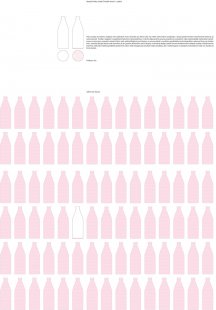
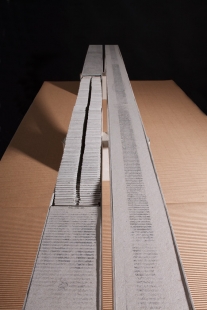
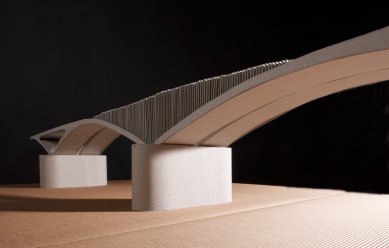
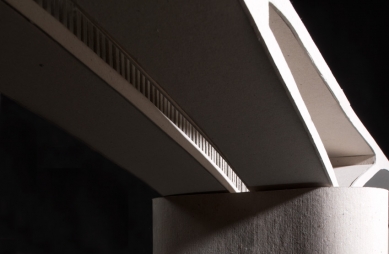

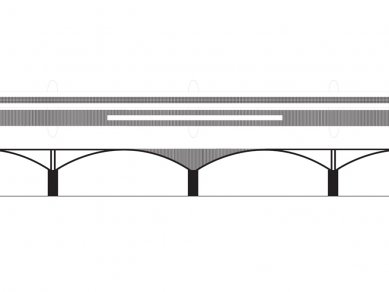
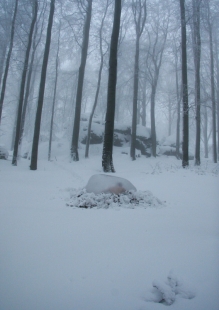
0 comments
add comment











